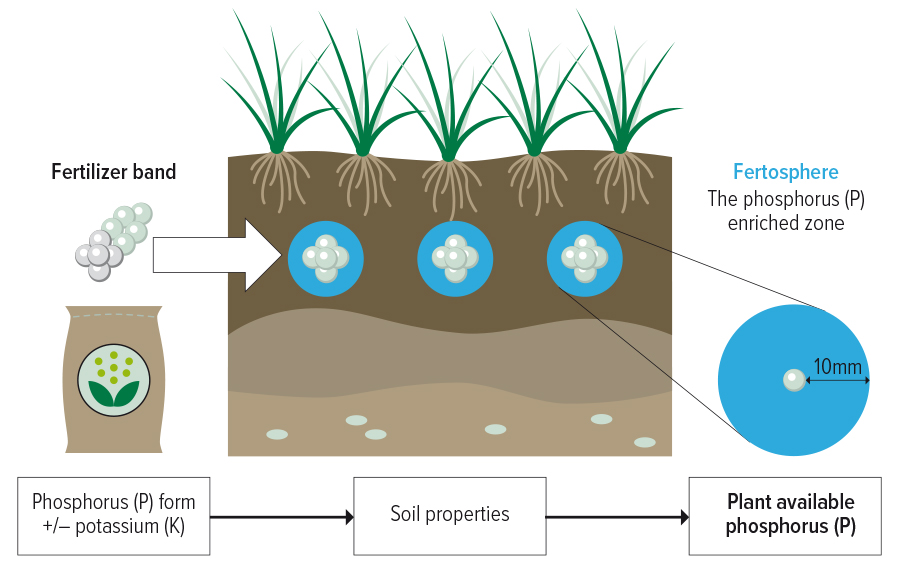Key message
- Increasing the rate of phosphorus in deep bands can reduce the efficiency of crop nutrient recovery
Improving phosphorus uptake from deep bands is not as simple as increasing the rate in the band.
Banding fertiliser is not new, especially in no-till cropping where retaining stubble cover is paramount. However, as cropping systems intensify and rates of nutrient removal rise, growers are increasingly reliant on fertiliser nutrients to meet plant demand. This is driving higher nutrient application rates, including higher in-band fertiliser concentrations, which can impact on the crop’s ability to access those nutrients.
The most extreme examples of high in-band fertiliser concentrations are in crops such as sorghum, cotton, maize and sugarcane, where high application rates are combined with row and fertiliser-band spacing that can be as wide as 100 to 150 centimetres. Likewise, on clay soils in the northern grains region, bands of less-mobile nutrients such as phosphorus and potassium are applied into subsoils at rates high enough to provide four to five years of residual benefit.
While these practices commonly deliver agronomic benefits, they are often characterised by inefficient crop nutrient recovery. Possible reasons vary but may include:
- the small volume of soil treated;
- root systems that are unable to respond to a nutrient-rich soil patch;
- roots that respond too well and rapidly dry out the band environment; and
- chemical changes in the band environment (the ‘fertosphere’) that slow or prevent root access or reduce the availability of the applied nutrients.
Early findings
Building on data from the More Profit from Crop Nutrition initiative, GRDC invested in a University of Queensland study exploring fertosphere dynamics associated with the application of different forms of granular phosphorus fertiliser – with or without co-applied potassium fertiliser applied as muriate of potash (Figure 1). Preliminary findings still require confirmation, but include some interesting, and unexpected, observations.
Figure 1. The fertosphere around bands of phosphorus fertiliser. The properties of the fertilisers themselves, in interaction with the surrounding soil matrix, will influence the availability of the applied nutrients for crop uptake.

Source: Dr Gregor Meyer
The form of phosphorus fertiliser used in the highly concentrated band appears to be important, with DAP seemingly having a higher availability within these bands than MAP or superphosphate across a wide range of soil types.
The pH of the fertosphere is a critical driver of this. Further work is underway to confirm these findings and to determine whether the form of phosphorus fertiliser used will influence the efficiency of plant utilisation in the bands.
Despite concern that the co-application of potassium with phosphorus can cause a decrease in phosphorus availability, findings so far indicate this effect is comparatively modest and relatively less important than the form of phosphorus fertiliser used.
Finally, phosphorus availability within the band is influenced by the interaction of the fertiliser with inherent soil properties. Banding phosphorus in calcareous soils is likely to be problematic, as it is rapidly converted to forms that are not available to plants.
In other soils, availability is highest for soils where the fertosphere pH remains near-neutral and decreases in soils where the fertosphere pH is more acidic.
Soils with a high clay content potentially cause a slight decrease in phosphorus availability within the band, although initial data suggests this decrease is smaller than that caused by low pH in the fertosphere.
Further studies are exploring the short and long-term availability of fertosphere phosphorus reaction products to plant root acquisition.
More information: Professor Mike Bell, 07 5460 1140, m.bell4@uq.edu.au

























































